
Eyrarbakki and the Accidental Norse Discovery of North America
Eyrarbakki
The first segment of my Ring Road trip around
Iceland in winter explored the Reykjanes peninsula in the
southwest.
I stayed in Eyrarbakki, a small fishing
town along the south coast, just east of the peninsula.
It's a small town, but it has played a big role in the
history of Iceland and the European discovery of
North America.
Eyrarbakki
I stayed for three nights in Eyrarbakki while I started the trip and saw things in the far southwest. It's a small fishing village on the south coast, its population was 540 in 2019. It's small, but Eyrarbakki used to be a Big Deal.
Eyrarbakki's harbor was the main port and trading center in the south of the country for centuries. It became one of the largest towns in Iceland, much larger at the time than Reykjavík. People once assumed that Eyrarbakki would become the capital of Iceland.

In 985 CE a young merchant named Bjarni Herjólfsson sailed from Eyrarbakki on his way toward Greenland without a map or compass. Between the fog, the currents, the wind, and his lack of navigational tools, he missed Greenland and ended up on the coast of North America.
When he got back he told Leif Erikkson about his unexpected journey and what he found. Bjarni was just glad to get back alive. He sold his boat to Leif and let him take the fame as the supposed first European to discover North America.

In the late 1800s fishing and fish processing became a prominent business here. Three fish processing companies operated here until around 1900.
However, the natural harbor had never been very good, and by 1925 Eyrarbakki was no longer an important trading center. The nearby Ölfusá river was bridged, making the harbor even less useful. Commercial fishing eventually ceased.
Above and below are the community's gymnasium. My sturdy red Dacia Logan wagon is parked in the gym's otherwise empty lot.
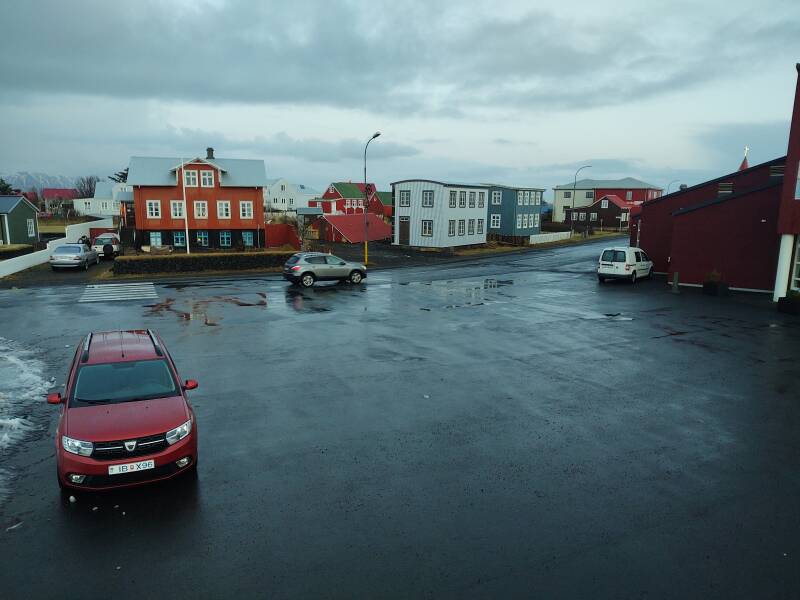
Eyrarbakki's current church was built in 1890, when the town was still prominent and prosperous. The altarpiece in the church was painted by Queen Louise of Denmark.
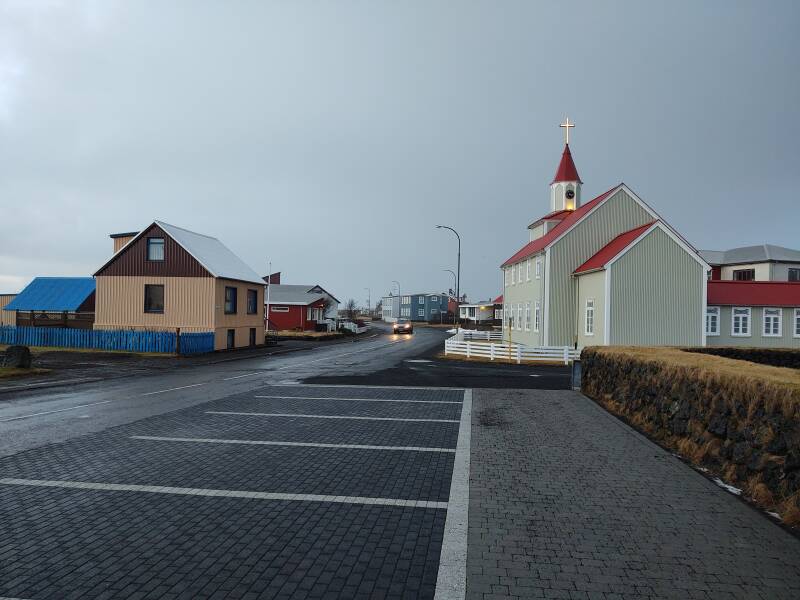
I have parked in the little lot by the church, and am walking east down Búðarstigur, the main street of Eyrarbakki. The place where I stayed is ahead on the right.

Here's my place, the 77 Guesthouse at 77 Búðarstigur. The family lives upstairs, guests enter through the door at the right end.
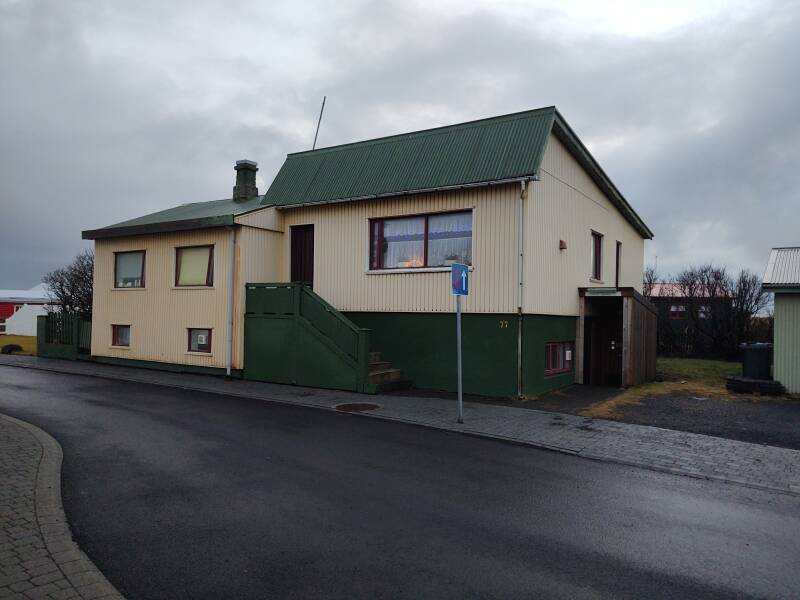
Tourism is a large part of the small local economy. Although not much goes on in the winter.
There are a few small farms raising the traditional small horse breed of Iceland. So, in the summer, you might go on horse rides. The horses look like paleolithic ponies that should be painted on a cave wall somewhere.

This structure, one of the largest in Eyrarbakki, is an HI hostel in the front wing and a set of apartments on the side toward the shore.
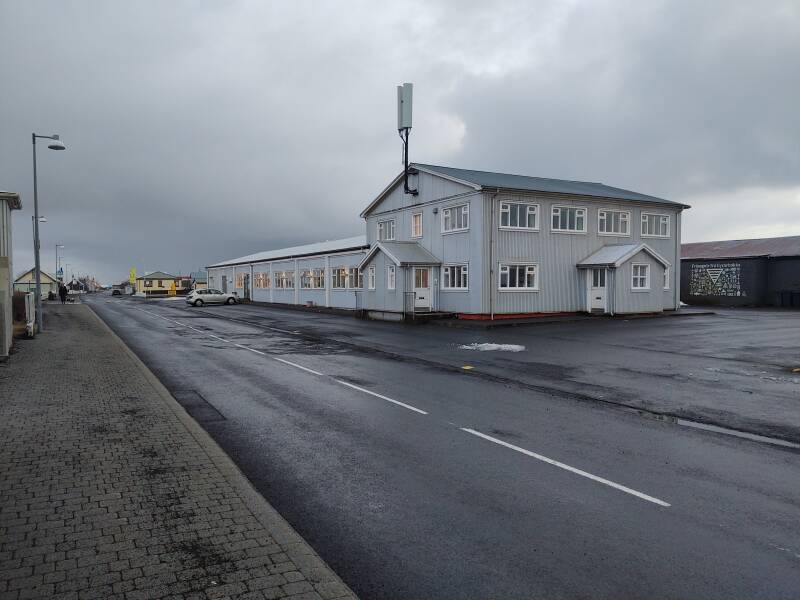
The most prominent business along the main street, actually the only prominent business, is the Bakkinn gas station and market.
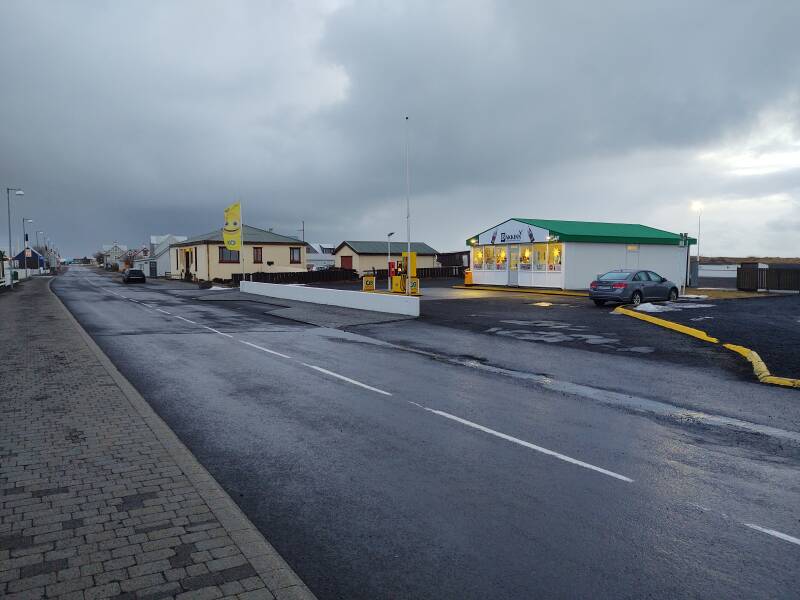
The local retirement home is near the center.
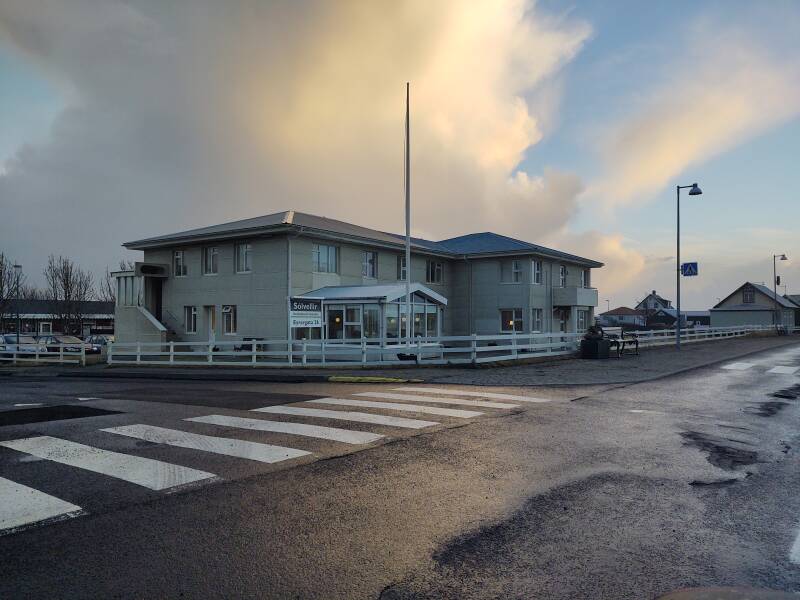
One fish-processing plant survived in Eyrarbakki until it closed in the 1990s. After that the other industrial enterprise, a factory that made frying pans, also closed.
The remaining non-touristic local employer is the Litla-Hraun or "Little Lava" prison outside the east end of town. It's the largest prison in all of Iceland, and it's smaller than many county jails in the U.S.
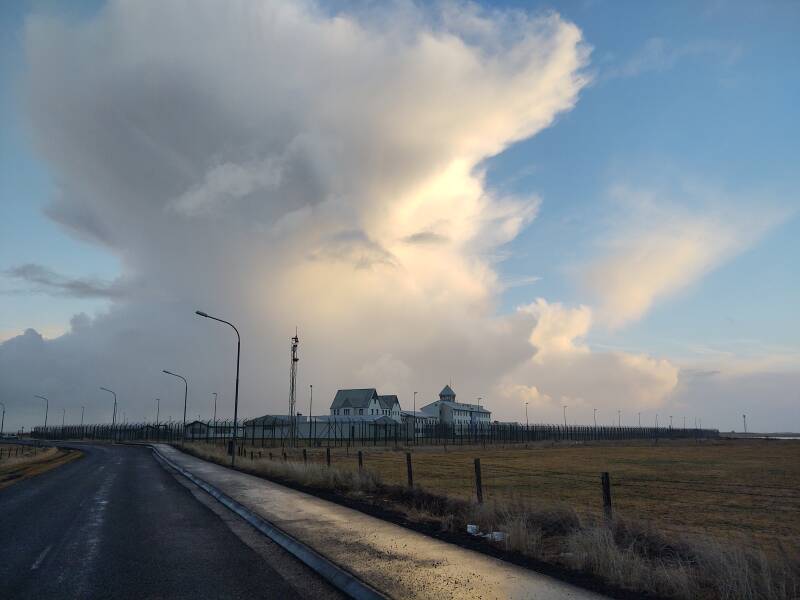
I had read, and was already feeling, that Iceland is a safe and well-behaved place. When the entire country's prison needs are largely met by one small facility on the edge of Eyrarbakki, that seems even more true.
I had recently read a letter to the editor objecting to that newspaper's use of the term "militarized police": "I was actually in the military. We only carried weapons when instructed to do so, which was only some of the time. And, it had been drilled into our heads that we were never allowed to kill anyone simply because something had frightened us. We need a word for the U.S. law enforcement trend, but 'militarized' isn't it."
Of course I notice this because I come from the U.S., where there is a fixation on incarceration and the heavily armed police presence is mostly attired and equipped for urban combat. Driving out of Eyrarbakki at my start of my fourth day in the country, I realized that I had not yet seen a single police officer or police vehicle in Iceland. I finally saw my first one on the evening of my fifth day in the country, it was parked at a business in Vík. I saw a few more in Höfn, but that town is home to a regional police station. Then a few police cars (or the same one three times) in Akureyri, Iceland's "northern capital". And then a few police cars around Reykjavik. I heard no sirens on my 3.5-week trip, and the only time I saw emergency lights was near Reykjavík on a police car escorting a transporter carrying a large piece of construction equipment.
OK, back to the walk through Eyrarbakki:
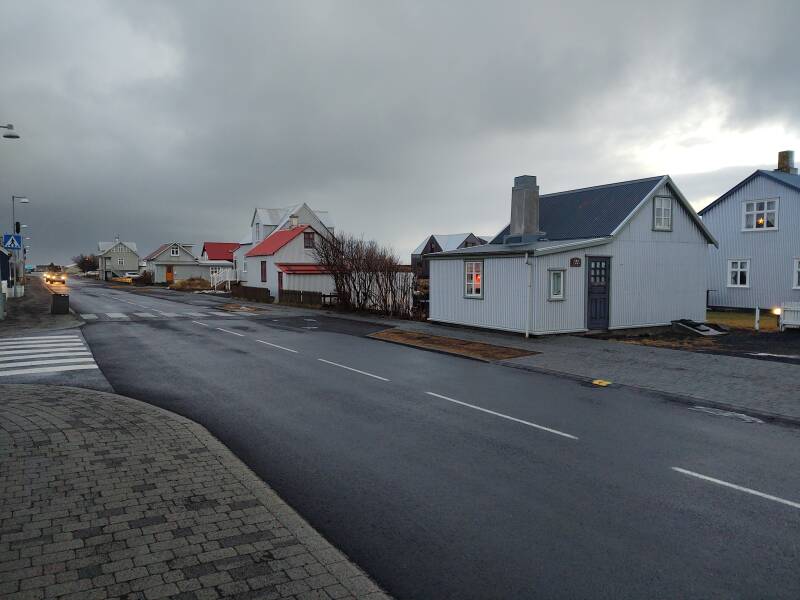
There are very few trees in Iceland. There certainly are no forests to support a timber industry. Lumber is shipped in from overseas. Long ago, driftwood was incredibly valuable as it was about the only source of wood.
I found that plastic, glass, and metal are recycled in Iceland, but paper generally is not. That's because without trees, there is no paper industry here. Paper has to be shipped to Norway if it is to be recycled.
So, almost everything in recent and current times has been built out of concrete and corrugated steel panels. And, the lime for concrete has to be imported. Iceland is all volcanic rock, nothing sedimentary and so there's no limestone. So, steel is very common.

The town's cemetery is well to the east of the center.
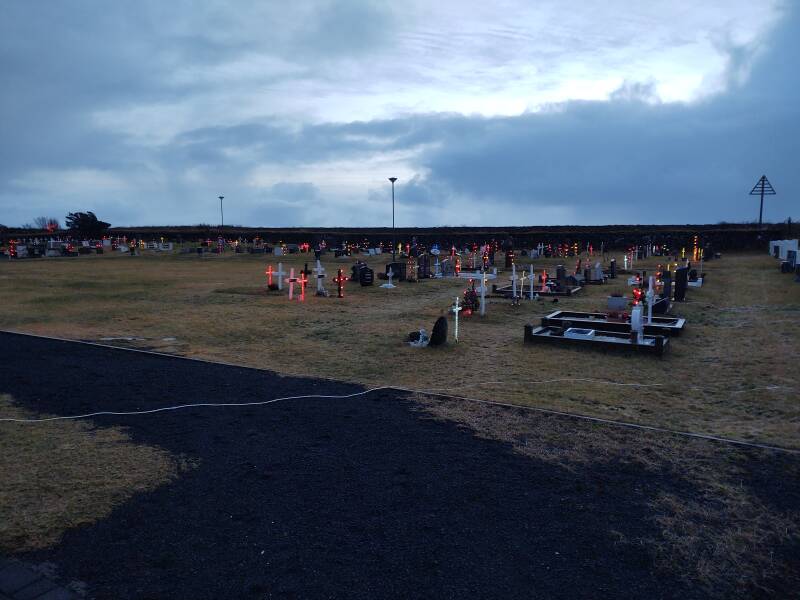
I did not know about the Icelandic custom of lighting graves at Christmas.
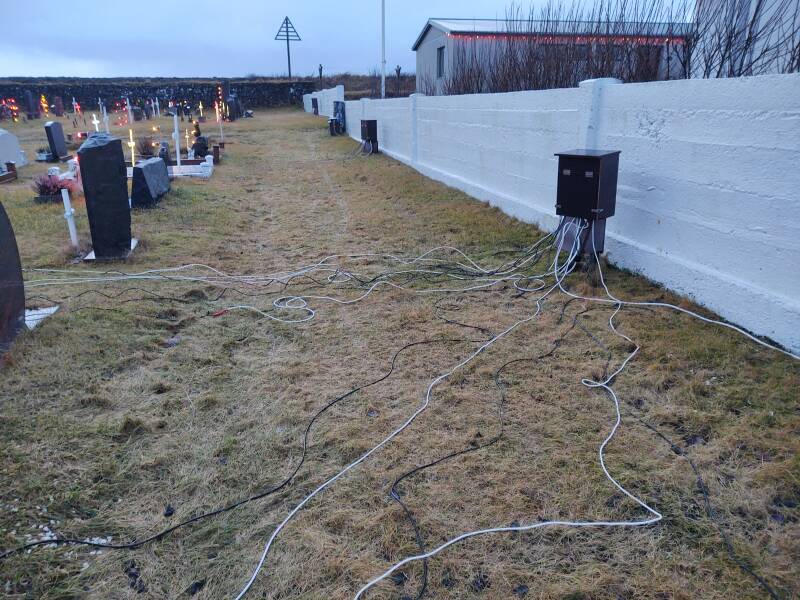
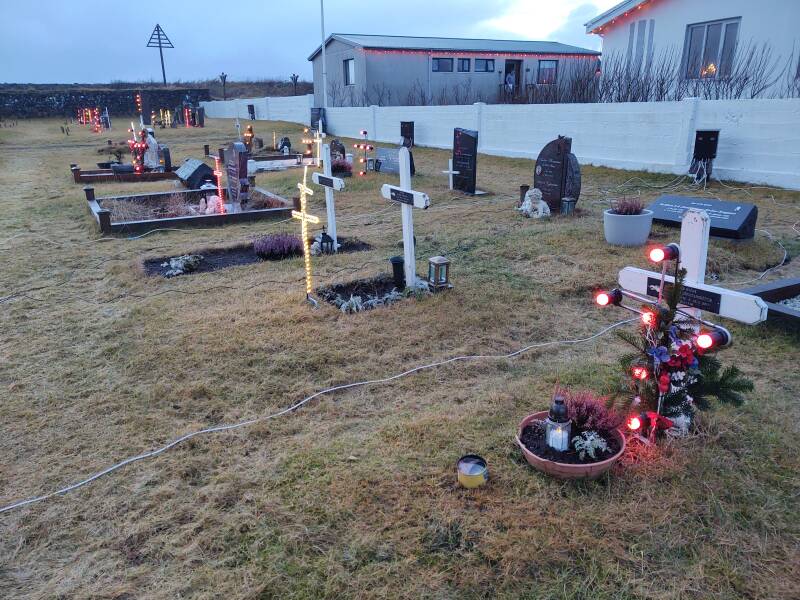
Onward to Vík
So far I had covered a path of 117 kilometers, from Keflavík Airport via the southwest tip of the Keykjanes Peninsula and continuing to Eyrarbakki. But I had covered at least three times that distance during my three days. That trend would continue through the trip.
Next: On to VíkMy next overnight stop would be further east along the south coast in Vík.
as in this;
Þ/þ is unvoiced,
as in thick.